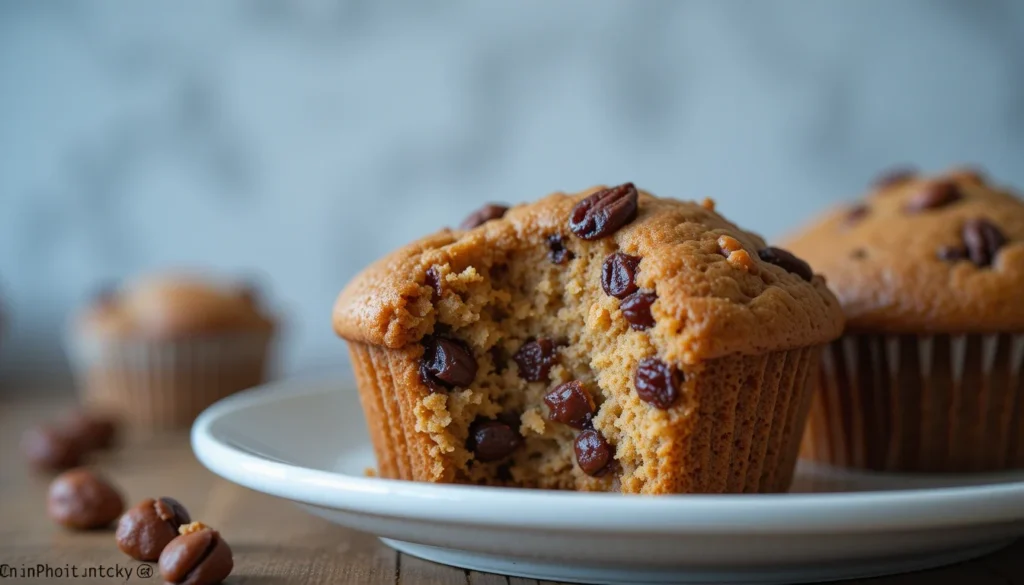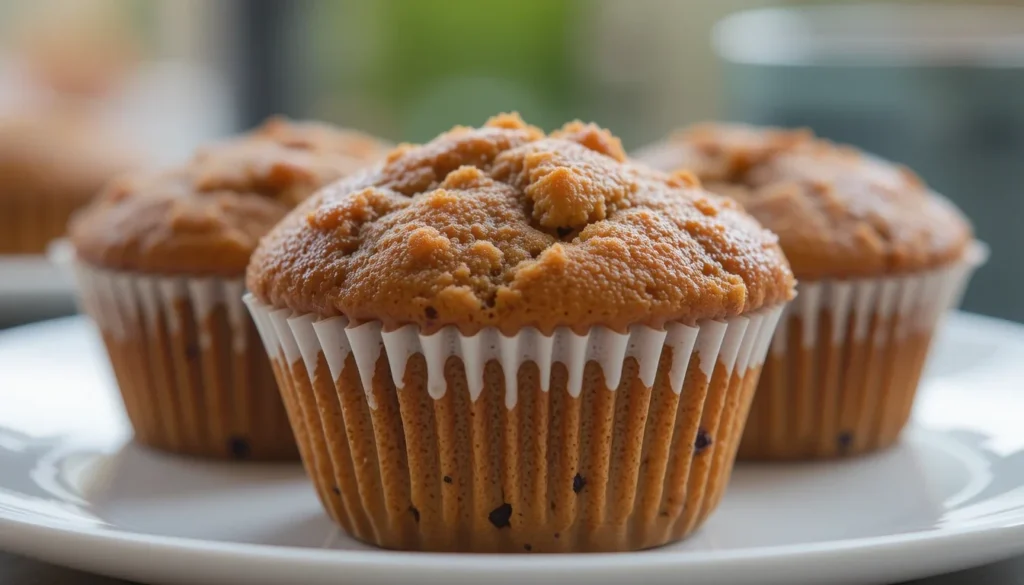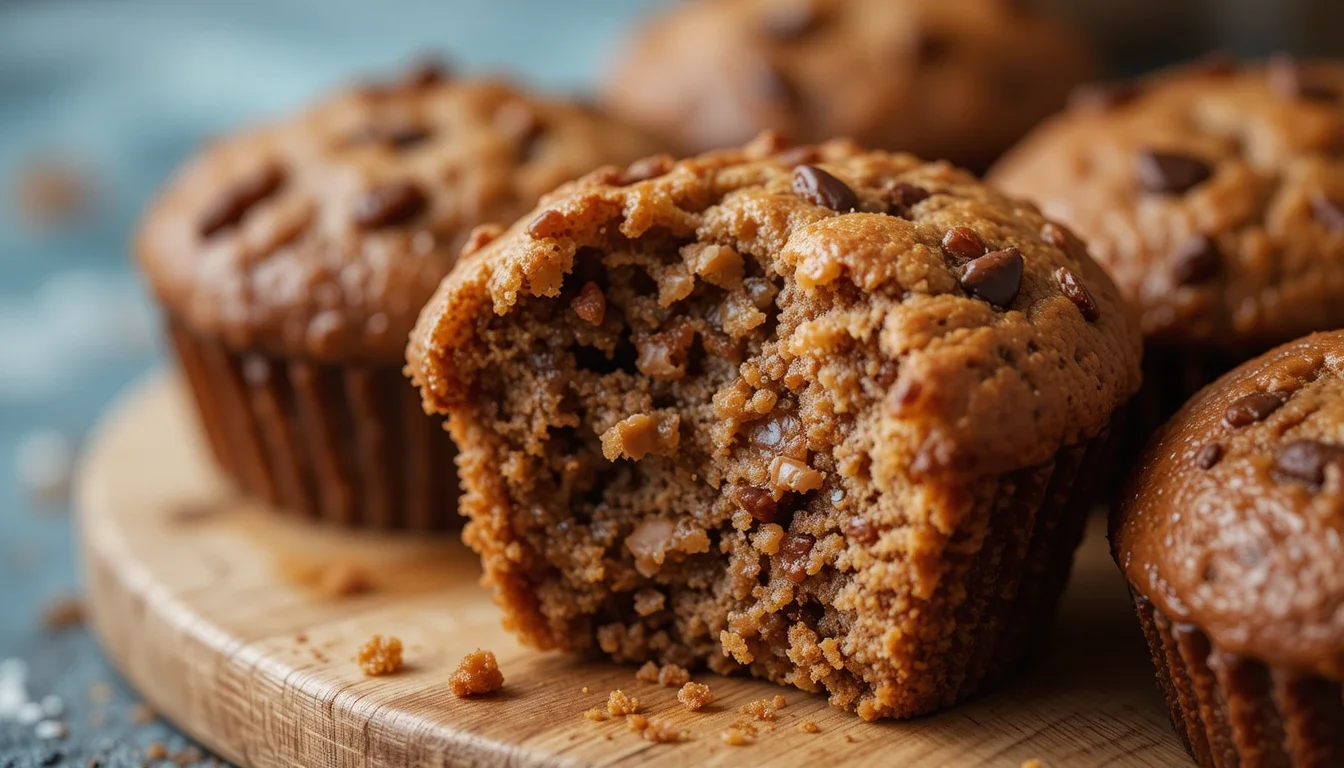Table of Contents
Bran muffins are a nutritious, fiber-packed breakfast or snack option loved by health-conscious eaters. Unlike traditional muffins that may be high in refined sugar and white flour, bran muffins incorporate wheat bran, a byproduct of milling whole wheat, making them an excellent source of dietary fiber.
If you’re looking for a healthy breakfast alternative, a weight-friendly snack, or just want to enjoy a delicious homemade muffin, this guide will take you through everything you need to know about bran muffins—from their history and health benefits to easy recipes and baking tips.
Part 1: Introduction & Health Benefits of Bran Muffins
1. What Are Bran Muffins?
Bran muffins are a type of muffin made with wheat bran, a nutrient-dense component of whole grains. Unlike standard muffins that are often loaded with refined carbohydrates and artificial sweeteners, bran muffins are a healthier alternative due to their high fiber content, lower sugar levels, and use of whole grain ingredients.
Why Choose Bran Muffins Over Regular Muffins?
If you’re debating whether to swap your usual morning pastry for a bran muffin, consider the following benefits:
- Nutrient-Dense: Packed with fiber, protein, and vitamins, they provide sustained energy.
- Lower Sugar Content: Unlike sugary store-bought muffins, bran muffins can be made with natural sweeteners.
- Heart-Healthy: The fiber in bran helps lower cholesterol levels and promote heart health.
For more information on how dietary fiber supports overall health, check out this comprehensive guide on fiber benefits.
2. The History of Bran Muffins

The origins of bran muffins can be traced back to the late 19th and early 20th centuries, a time when the health benefits of dietary fiber were first being explored. During this period, health reformers and nutritionists began advocating for whole grains and fiber-rich foods as essential components of a balanced diet.
One of the key influencers in this movement was Dr. John Harvey Kellogg, a physician and nutritionist who promoted high-fiber diets as a way to improve digestion and overall health. He emphasized the importance of wheat bran and introduced it into various baked goods, including muffins. His work at the Battle Creek Sanitarium, a health resort in Michigan, played a crucial role in popularizing fiber-rich foods, leading to the creation of early versions of bran muffins.
Bran Muffins in Early American and British Baking
By the early 1900s, bran muffins began appearing in cookbooks and dietary guides in both the United States and Britain. Many of these recipes followed basic baking principles, using wheat bran, buttermilk, eggs, molasses, and a small amount of sweetener. Due to the lack of chemical leavening agents at the time, these muffins were denser and heartier than modern versions.
During World War I and the Great Depression, bran muffins gained even more popularity because:
- Bran was an inexpensive byproduct of wheat milling and was readily available.
- People were encouraged to eat whole grains instead of refined white flour to conserve resources.
- Home bakers sought nutrient-dense foods to make the most of limited ingredients.
The Rise of Commercial Bran Muffins
In the mid-20th century, as processed foods became more common, bran muffins saw a shift in their preparation. Bakeries and food companies started mass-producing bran muffins, often adding refined sugar and artificial flavorings to enhance their taste and shelf life. Unfortunately, this meant that some store-bought bran muffins were no longer as healthy as their homemade counterparts.
However, in the 1970s and 1980s, with the rise of the health food movement, bran muffins saw a resurgence in popularity. Health-conscious consumers sought high-fiber foods, and bran muffins became a staple in diet plans, weight-loss programs, and natural food stores.
Modern Bran Muffins
Today, bran muffins have evolved into a versatile and customizable baked good. While the traditional versions are still enjoyed, modern recipes include a variety of add-ins and modifications to enhance flavor and nutrition:
Gluten-Free Options: Oat bran or almond flour instead of wheat bran for those with gluten sensitivities.
Sweeteners: Honey, maple syrup, and coconut sugar instead of refined sugar.
Moisture Enhancers: Applesauce, Greek yogurt, and mashed bananas for a lighter texture.
Flavor Boosters: Cinnamon, vanilla, nuts, raisins, and fresh fruit like blueberries.
3. Health Benefits of Bran Muffins
One of the biggest reasons people opt for bran muffins is their health benefits. Unlike processed snacks, bran muffins provide a natural source of fiber, vitamins, and essential minerals.
1. High in Dietary Fiber
A single bran muffin can contain up to 5 grams of fiber, which supports gut health and digestion. Benefits of this fiber include:
- Prevents constipation and promotes regular bowel movements.
- Feeds good gut bacteria, improving overall digestive health.
- Keeps you full longer, making it an ideal weight-friendly snack.
2. Supports Heart Health
- Bran muffins are high in soluble fiber, which helps reduce cholesterol.
- Whole grains in bran muffins are linked to a lower risk of heart disease.
- Many recipes use healthy fats like olive oil or coconut oil, which are good for heart health.
For more on the role of whole grains in heart health, read this whole grain baking guide.
3. Aids in Weight Management
Since bran muffins are low in calories and high in fiber, they:
- Help control hunger cravings
- Regulate blood sugar levels, preventing energy crashes
- Provide sustained energy for busy mornings
Part 2: Baking the Perfect Bran Muffin
4. Ingredients Breakdown: What Makes a Perfect Bran Muffin?
Core Ingredients
✔️ Wheat bran – The primary source of fiber
✔️ Whole wheat flour – A healthier alternative to white flour
✔️ Eggs – For structure and texture
✔️ Milk or buttermilk – Adds moisture
✔️ Baking soda & baking powder – Helps the muffins rise
✔️ Healthy fat – Olive oil or coconut oil
Optional Additions for Flavor
- Honey or maple syrup for natural sweetness
- Nuts (walnuts, almonds) for crunch and healthy fats
- Raisins or blueberries for a fruitier taste
- Molasses for a deep, rich flavor
For ingredient substitutions, check out this guide on baking substitutes.
5. Step-by-Step Guide to Making Bran Muffins
Step-by-Step Instructions

1️⃣ Soak the wheat bran – Mix it with milk and let it sit for 10 minutes to soften.
2️⃣ Mix wet ingredients – Whisk eggs, oil, and sweetener together.
3️⃣ Combine dry ingredients – Stir in flour, baking soda, and a pinch of salt.
4️⃣ Fold everything together – Gently mix the wet and dry ingredients. Avoid overmixing!
5️⃣ Bake at 375°F (190°C) for 18-20 minutes – Until golden brown.
Storage Tips
- Store in an airtight container at room temperature for up to 3 days.
- Freeze bran muffins in a ziplock bag for up to 3 months.
6. Common Mistakes & How to Avoid Them
🔴 Dry muffins? – Soak wheat bran properly before mixing.
🔴 Dense texture? – Don’t overmix the batter!
🔴 Too crumbly? – Add an extra egg or some applesauce for moisture.
🔴 Flat muffins? – Use fresh baking powder and preheat the oven properly.
7. FAQs About Bran Muffins
Are Bran Muffins actually healthy?
Yes! Bran muffins are high in dietary fiber, which supports digestion and helps maintain a healthy gut. When made with whole wheat flour, natural sweeteners, and healthy fats, they are a nutritious alternative to regular muffins. However, store-bought versions may contain excess sugar and refined flour, so homemade recipes are the best choice for a healthier option.
What does Bran Muffin mean?
A bran muffin is a type of muffin made using wheat bran, the outer layer of the wheat kernel. It is known for its high fiber content and is often enjoyed as a nutritious breakfast or snack.
What is the difference between a Bran Muffin and a regular muffin?
The main differences are:
- Bran muffins contain wheat bran, which makes them higher in fiber than regular muffins.
- Regular muffins often use refined flour, while bran muffins use whole grain flour or bran.
- Bran muffins are usually less sweet and denser than traditional muffins.
What is Baking Bran?
Baking bran refers to wheat bran or oat bran used in baking to increase fiber content. It adds a slightly nutty flavor and can be mixed with flour to enhance texture and nutritional value in baked goods like muffins, bread, and pancakes.
Is it okay to eat a Bran Muffin every day?
Yes, as long as it’s homemade or low in sugar. Since bran muffins are rich in fiber, they can help with digestion and weight management. However, eating too much bran without enough water can cause digestive discomfort.
What is Bran made of?
Bran is the outer layer of whole grains like wheat, oats, rice, and barley. It is rich in fiber, B vitamins, and antioxidants, making it a highly nutritious ingredient in baking and cereals.
Is Bran healthier than oats?
Both are healthy, but they serve different purposes:
- Bran has more fiber than oats, making it better for digestive health.
- Oats contain more protein and healthy fats, making them good for heart health and energy.
- If you need extra fiber, bran is the better choice; if you want a balanced nutrient profile, oats are ideal.
Can you replace flour with Bran?
Not entirely. Bran does not contain gluten like flour, so it cannot completely replace wheat flour in baking. However, you can substitute up to 25-30% of flour with bran to increase fiber content without affecting the texture too much.
Is Bran a wheat or oats?
Bran is a part of grains and can come from different sources, such as:
Corn bran – From corn kernels
Wheat bran – Outer layer of wheat grains
Oat bran – Outer layer of oat grains
Rice bran – From rice grains
Conclusion: Enjoying Bran Muffins the Right Way
Bran muffins are a fantastic way to enjoy a healthy, fiber-rich treat without sacrificing flavor. Whether you prefer a classic recipe or a fruit-infused variation, these muffins provide nutrition, taste, and versatility. They can be easily customized with natural sweeteners, whole grains, and flavorful add-ins like nuts, honey, or fruit.
For those who love baking breakfast items, consider trying out other morning favorites like this delicious Everyday Pancakes Recipe, which offers simple yet fluffy pancakes perfect for any morning routine. If you’re looking for something a little different, a hearty waffle sandwich might be a great alternative—check out this Waffle Sandwich Recipe Guide for more inspiration.
Looking for something sweet to complement your muffins? A homemade Strawberry Puree Recipe could be the perfect fruit topping to drizzle over warm bran muffins for an extra burst of flavor.
Try baking your own bran muffins today and enjoy the benefits of whole grains, fiber, and natural ingredients!


3 thoughts on “Bran Muffins – A Healthy, Fiber-Rich Breakfast Treat”